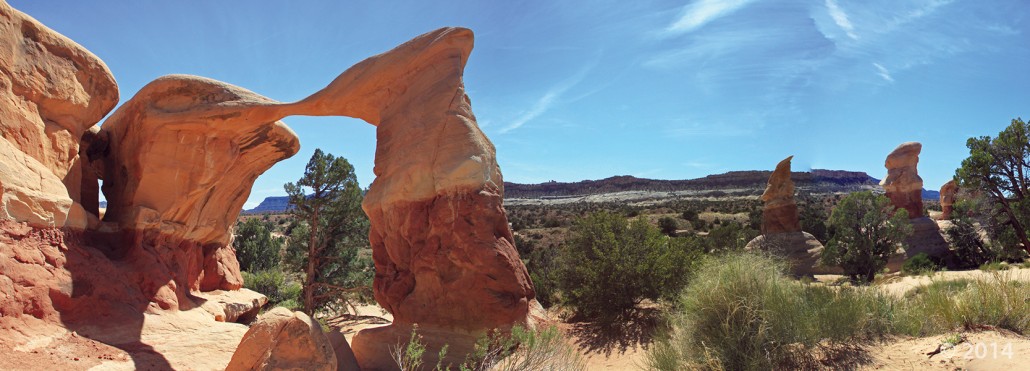Tag Archive for: Garfield County
 By: Robert F. Biek, John J. Anderson, Edward G. Sable, and Peter D. Rowley
By: Robert F. Biek, John J. Anderson, Edward G. Sable, and Peter D. Rowley
The Haycock Mountain quadrangle lies in the central part of the Markagunt Plateau in southwest Utah and includes the eastern part of Panguitch Lake, a popular area of summer and winter recreational use. Despite the plateau’s relatively simple structure of a gently east-tilted fault block, the quadrangle contains scenic and instructive exposures of south-west Utah’s youngest basaltic lava flows, classic examples of inverted valleys capped by older lava flows, and the southern margin of the Markagunt Megabreccia, including newly identified, exceptionally instructive exposures of its basil slip surface. The Megabreccia is the debris of Utah’s largest catastrophic landslide deposit, which covers 1300 square miles (3400 km²) of the northern and central Markagunt Plateau.
 By: Robert F. Biek, John J. Anderson, Edward G. Sable, and Peter D. Rowley
By: Robert F. Biek, John J. Anderson, Edward G. Sable, and Peter D. Rowley
The Panguitch Lake quadrangle lies in the central part of the Markagunt Plateau in southwest Utah and includes Panguitch Lake, a popular area of summer and winter recreational use. Despite the plateau’s relatively simple structure of a gently east-tilted fault block, the quadrangle contains scenic and instructive exposures of southwest Utah’s youngest basaltic lava flows, classic examples of inverted valleys capped by older lava flows, glacial deposits in the Castle Valley area, and the southern margin of the Markagunt Megabreccia. The Megabreccia is the debris of Utah’s largest catastrophic landslide deposit, which covers 1300 square miles (3400 km²) of the northern and central Markagunt Plateau.
 Dixie National Forest, Garfield County, Utah
Dixie National Forest, Garfield County, Utah
Photographer: Robert F. Biek; © 2012
Colorful volcanic sandstone and mudstone of the Brian Head Formation record initiation of volcanic activity in southwest Utah about 36 million years ago. Here, Eocene-age Brian Head deposits form rugged badlands at the south end of the Sevier Plateau.











